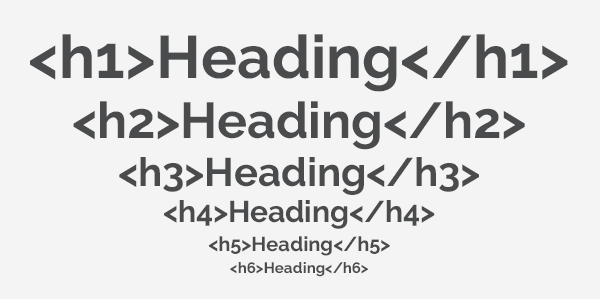Top 10 tips to write SEO friendly text :
Creating quality content is not enough to get it to a public view, it is also important for it to be SEO friendly.
Table of Contents
It means that the text, article, blog post or any other type of content published online should get a good ranking from Google software to be presented in the search engine among top results. For a beginner, it might seem tricky, but the rules are not that hard to follow.
Actually, any online content creating entity follows these rules, whether it is Wikipedia or PaperLeaf. This guide will help you to write SEO friendly content with ease!
Why Your Content Should Be Write SEO Friendly Text?
First of all, it is the most credible way to make your web page more popular and sharable.
Even if you have the best and the freshest ideas, the article won’t get many views if it is shown on the 10th page of Google search results. Any text should be published in a form that makes it more approachable and readable.
Secondly, it will make your content more appealing to the public. There is a common misconception that caring about SEO means not caring about readers, but the truth is it is actually the opposite.
It means shaping your content the way it is more attracting for people.
Amazing Tips to Write SEO Friendly Text :
Now let’s talk about the basics that everyone should know. What makes a difference in creating SEO friendly content?
Basically, everything starting from the title, keywords and up to the lengths of the article. Here are 10 tips that will drastically improve the popularity of your content:
1. Do research on keywords.
Good content starts with planning, as soon as you have an idea what you are going to address, it is time to find perfect keywords. There are two types of them – short ones (up to three words) and long-tail keywords.
Short ones are more popular in use, but the LTK actually bring a more specific target audience. And they make it easier to get to the first page of search results.
For example keyword “SEO hacks” is hard to compete with as there are many articles on this matter, but if you use LTK like “Easy SEO hacks for bloggers” you’ll more likely get to the top search results according to it.
How to find suitable keywords? You can use Google search when you type there something it also shows related searches. There is also a free tool – Google keyword planner. There are also more professional software possibilities:
– SEMRUSH
– Ahrefs
– LongTailPro
2. Use keywords wisely.
It is so easy to overdo them! Keyword stuffing is bad; it makes your content rank lower. What is the approximate number of keywords to put in an article? Well, there is no strict rule set for everyone, but generally, it should be not more than 2% of your content.
Where should one put keywords? In title, meta-title, in some subheadings (but not all of them) and in meta-description. It is also great to place some at the beginning of an article and in the final paragraphs.
3. Figure out the lengths of your text
Everyone knows that Google likes long texts; however, it is important to know how long it should actually be. First of all, it should not be less than 300 words.
But how should one figure out the maximum size? The best way is to look at your competitors’ content.
SEO Rambler is a free tool that helps you analyze this; it shows the lengths of competitors’ articles according to the target keyword (your main keyword of the text).
At the end of the statistic, it shows the average word count on the three most visited pages, so you can base your number of words on that. If it is 2000 words, this is your approximate lengths of an article.
4. Include H1, H2, H3 in your draft
Content should be logical and comprehensible, that’s why you need to have a clear idea of what you are going to disclose.
The simple structure includes an introduction, main part, and conclusion, similar to an essay. Start with drafting an outline for your article, so you don’t forget about anything and don’t get things mixed.
What is also crucial is using at least three levels of headings to divide the text into logical parts that are easier to read.
First of all, many of reader can be using mobile devices, and separate blocks are easier to view. Secondly, it is very discouraging to see an overloaded with words text with no paragraphs and logical endings.
Here is an example of a structure:
H1: Amazing Low Investment Ideas for Students”
Introduction
H2: 10 Low Investment Businesses You Can Start Today
H3: 1. Selling online products
H3: 2. Affiliate marketing
H3: 3. Providing services
H3: 4. Tutoring…
5. Shape your content according to people’s searches
It is important for any article to be relevant for a viewer, how to achieve that? Use Google itself to see the “people also ask” – there are common questions concerning your target keyword.
Choose the ones that are relevant for your text and answer them. This way you will make it useful for readers.
6. Work on Title, Meta-Title, and URL
The post title is the title given on your page; this is what a reader sees. Meta-title is the one that is given in the search results.
They can be the same, for example, if you don’t post meta-title, your post title will be shown as such automatically.
The title must contain the main keyword and the meta-title too! It shouldn’t be longer than 66 characters, so it is displayed fully in the results.
When designing URL delete all stop words (mainly, prepositions and articles) and keep only meaningful words. But never change the URL after posting an article, it is too late now.
7. Meta-description
Meta-description is the text that is given below the meta-title in search results. It is crucial for SEO ranking of your content and helps a reader understand whether this article is suitable for them.
It should not be more than 156 characters, should have a target keyword. Another rule is that is should depict the main subject of an article and be appealing for a viewer.
8. Putting in Images
Graphs, pictures, statistics make content more appealing, interesting and well-researched. The secret is that Google ranking system doesn’t read images, so in order for them to be processed properly, you need to name them correctly.
For example, not “pic0001” but “Semrush analytic dashboard.”
9. Put in links
If you have other articles on this topic, add internal links to your content, so that readers will find it. It is also great to put in external links, but only for credible sources, such as Wikipedia or any governmental website.
10.Proofread your text.
Create an SEO checklist to make sure that each tip is followed in every post you make. Each article is viewed by Google as a separate web page, so each of them should be top-notch.
It is also great to use plagiarism checker software to make sure that your content is unique and won’t get ranked as copy pasting.
Conclusion
These tips will help you to get more views and shape your content according to viewers’ needs. Following SEO guidelines to Write SEO Friendly Text mean caring about your readers as well as the popularity of your website.



